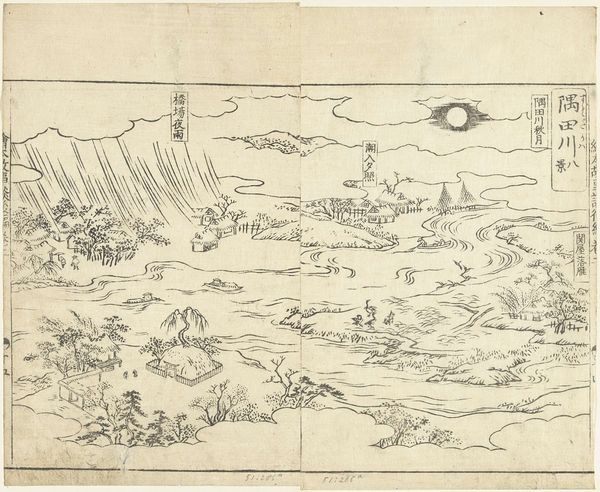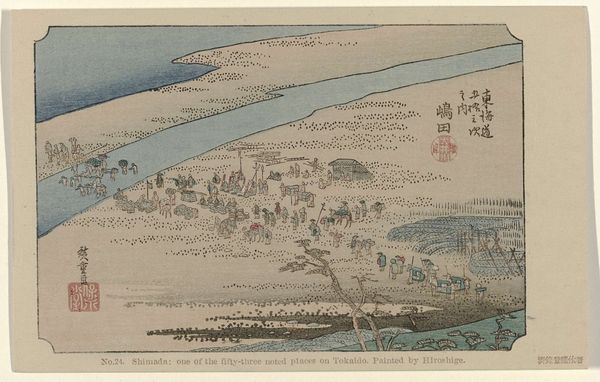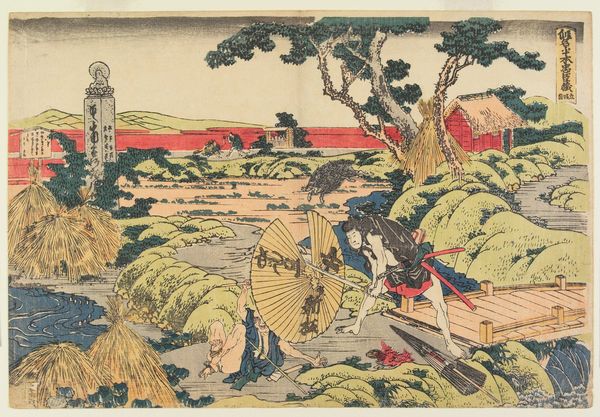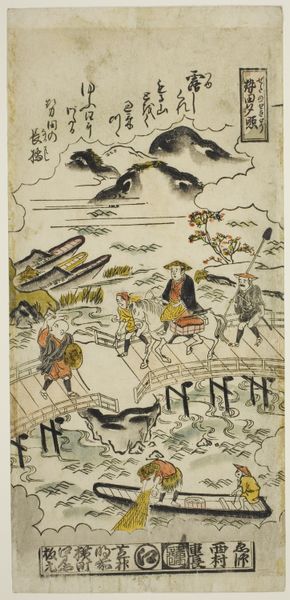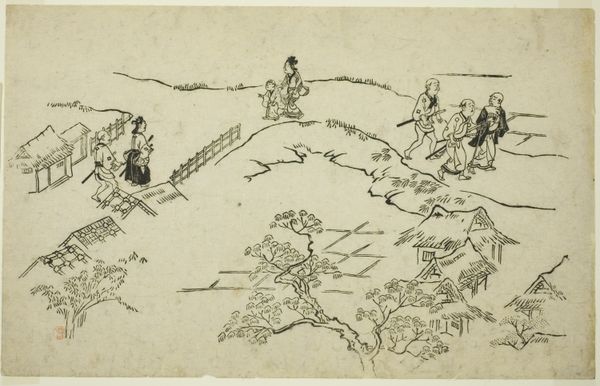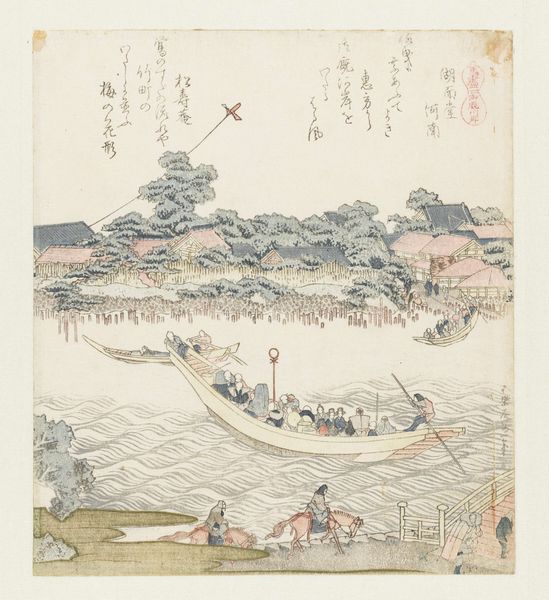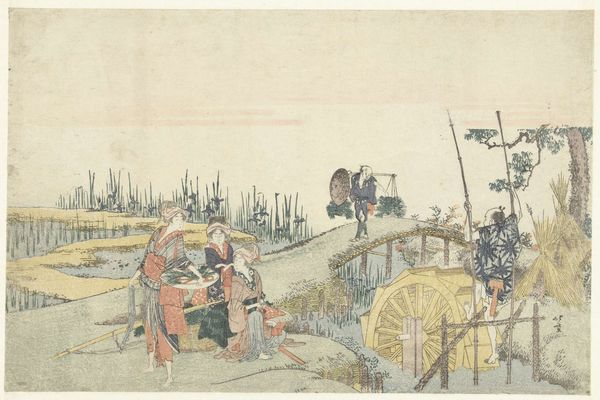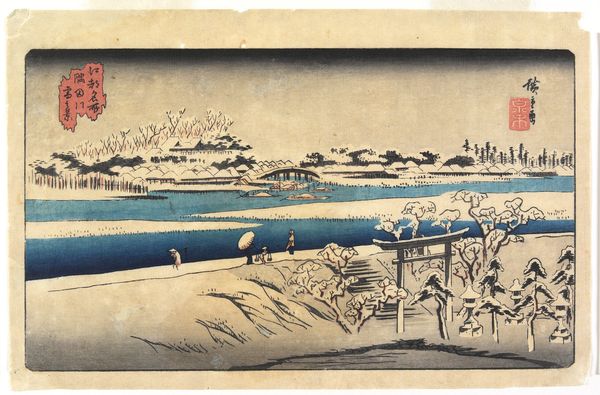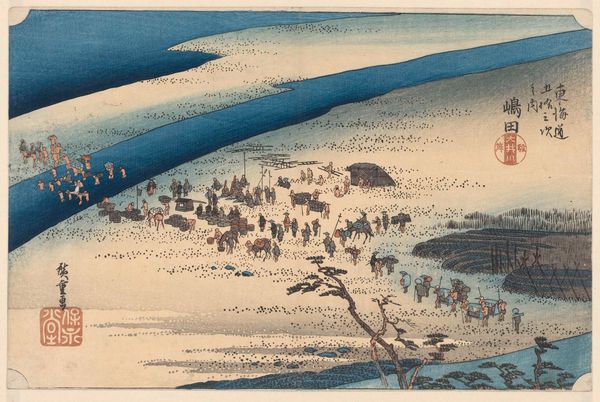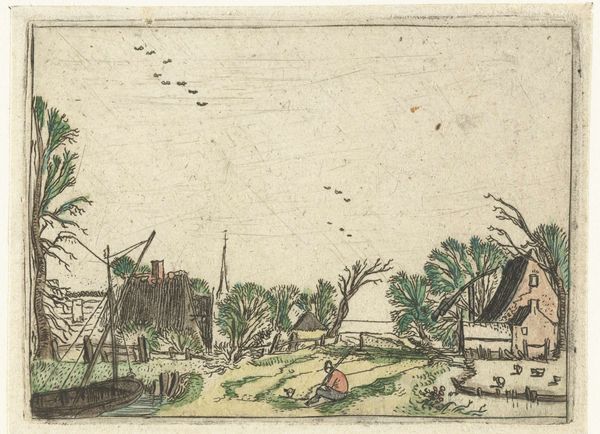
Perspective Picture of Whale Hunting in Kumano Bay c. 1770s - 1780s
0:00
0:00
print, etching, ink, woodblock-print
#
narrative-art
#
ink painting
# print
#
etching
#
landscape
#
ukiyo-e
#
ink
#
woodblock-print
#
genre-painting
Dimensions: 9 1/2 × 14 5/8 in. (24.1 × 37.2 cm) (image, horizontal ōban)
Copyright: Public Domain
Editor: Here we have Utagawa Toyoharu's "Perspective Picture of Whale Hunting in Kumano Bay," created around the 1770s or 80s. It's a woodblock print, and the detail is amazing! The scene feels so dynamic and active, full of swirling water and human figures, but what really strikes me is that plume of water erupting from the whale. How would you interpret this work? Curator: The plume, yes, that's key. Consider how that image resonates across cultures. The whale breaching has always been symbolic – freedom, power, but also vulnerability, given the hunt. But think, too, about the whale *in* Kumano Bay. What does it represent for that culture at that moment? Is it simply a resource, or something more intertwined with their identity? Editor: That’s a good question. I guess I hadn’t thought about it beyond the surface of a hunting scene. Curator: Notice also how Toyoharu employs perspective. It’s not perfectly Western; there's a flattening, a negotiation between traditions. What does that blending of visual languages communicate about Japan's evolving relationship with the world at that time? Do you think that affects how they are representing the whale hunt itself? Editor: I suppose it suggests a society both embracing and holding onto its traditions. The whale hunt becomes this focal point where these internal and external forces meet, a place of both cultural pride and perhaps, internal struggle. Curator: Precisely. These images are never just what they seem. They are vessels carrying complex histories. And sometimes, an image of a whale carries the weight of cultural identity and transformation. Editor: I never thought about a whale hunt carrying that sort of symbolic load, that such an everyday event could reveal so much! Thanks for illuminating it.
Comments
No comments
Be the first to comment and join the conversation on the ultimate creative platform.

